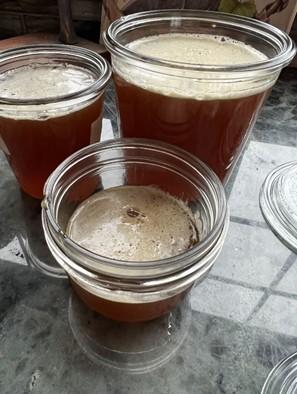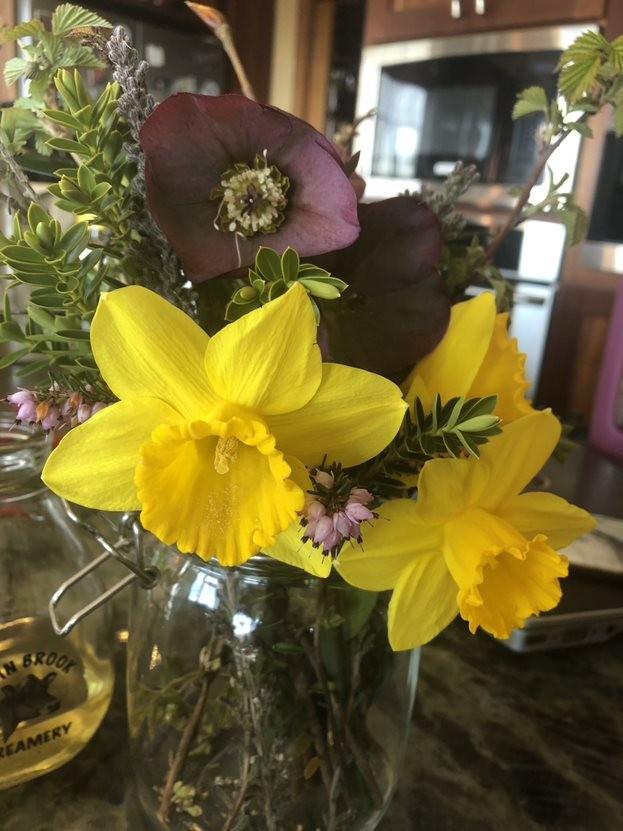
8 minute read
Kitchen Counter Monologues
March 2023
From In Donata’s Kitchen
Advertisement
Contents
In this issue of Kitchen Counter Monologues:
My favorite Garden Blooms of Late Winter
A Month of Palindromes
A Flaming 7’s 7k Fun Run
Farms on Fobes Hill: Fobes Hill Farm and the Farm on 83rd
What’s In Season: Maple and Nettle
*A Monologue About Practicing a Slow, Hyperlocal Foodway
*Maple Sugaring Pictures
*Pear Maple Pecan Syrup
*Wild Greens Pesto
Natural Slug Control
St. Patrick’s Day Dinner: Lamb Stew and Soda Bread
It’s March, and she did come in like a Lion, but only for a day or two, and then she charged like a raging Ewe, and after a last week of freeze she will turn into the Lamb that we all know and love. Weather wise, at least. Misty rains, sometimes with thunder showers, that are certain to bring rainbows and vibrant sunsets that will guide us into April. The first fruit trees will begin to blossom. Here, on my little knob atop Fobes Hill, the Golden Plum will bloom first, permeating the air with a sweet scent of floral honey. Right now the Pussywillows are already turning to flower, bringing bits of yellow to the Willows, and the cottony buds of the Star Magnolia are just about ready to burst into a white frilly show of flowers. The Early Blooming Currant are making quite a show around neighborhoods in these parts, and the yellow Forsythia is soon to follow. Our bulbs are all peeking out of the ground, and next week, as the outdoor temperatures reach 50, the daffodils, crocus, and hyacinth, are sure to bloom.
Favorite Late Winter Garden Blooms
White Heather
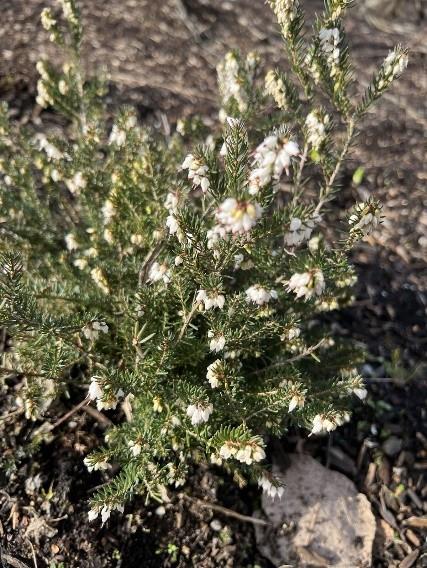
Hellebores
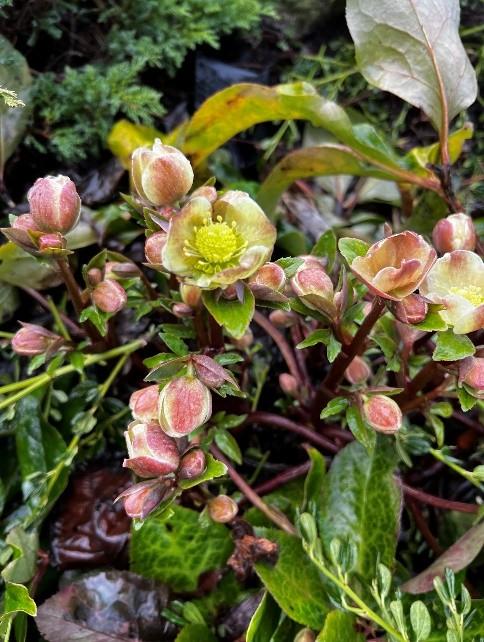
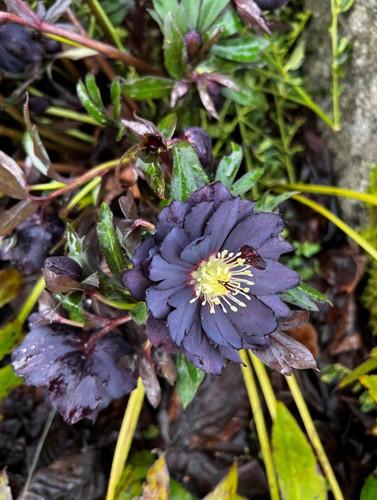
False Turkey Tail Mushrooms
Pussywillow
Nettle https://www.farmersalmanac.com/its-palindrome-day14486#:~:text=Palindrome%20Dates%20In%202023&text=For%20example %2C%20in%202023%2C%20there,20%2F3%2F23%20qualify.
One of the many reasons I wanted to live on Fobes Hill.
When I was young we would come out to cruise the hill and visit family. Along the way there farm stands full of eggs, and raw milk, honey, flowers, and whatever fruits and veggies were in season. Though it waned for a while, and I sorely miss the Lavender stand that was just up the road from me, many of the old stands still exist and a resurgence of flower farms and nurseries are dotting the hill once again. I love driving along 83rd and finding the hood of this old car open. It means there are fresh chicken and duck eggs. Honey, jam, and candles too!
Fobes Hill Farm offers Chickens and Eggs as well. I follow them on instagram to find out when fresh eggs are available at the road side stand, and order chickens on their website.
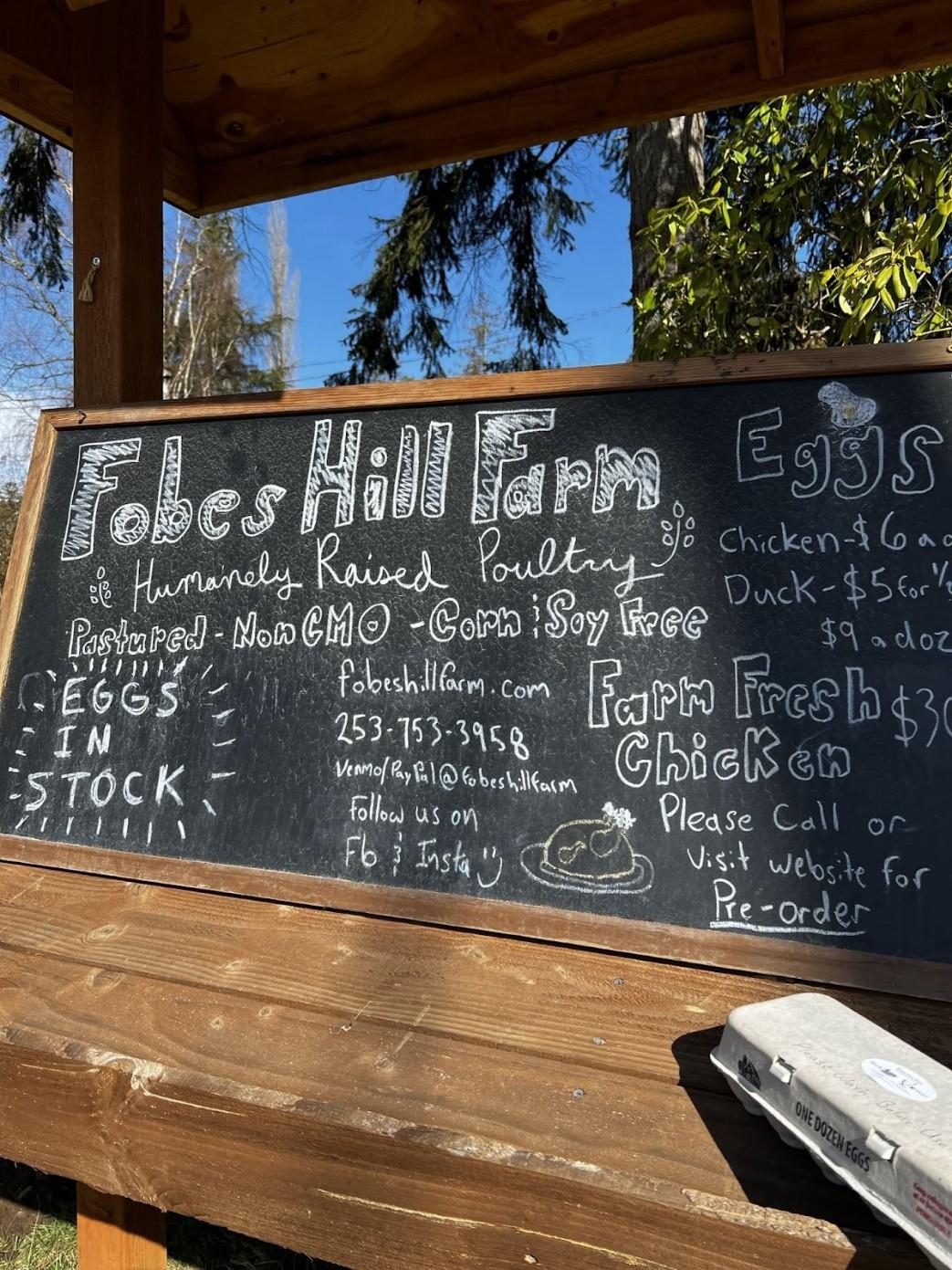
This is a month full of wild astrology, planetary happenings, and numerology.It is full of feasts days and spring celebrations, it is month charged with wild energy, breaking us out of our shells and thrusting into the light that is growing by two minutes and seven seconds each day until the peak of summer, the Summer Solstice, sends us sprialing backward again in June. According to the Farmer’s Almanac, there are 11 Palindrome days this month. In case you are unaware of this numerological phenomenon, these are the dates that read the same forward and backward.
Palindromes exist in nature and that is a theory of biology related to DNA that is of no consequence to this theory of dates. Much information abounds on the significance of these sequences. One suggests that its a nice tidy little flow of symmetry that is intriguing. One suggests that it represents hope and the presence of angels. This is reminiscent of the many rainbows we will see this month, a symbol of hope and renewal and the gold (or peace, or fulfillment, or abundance) we will find at the end of that rainbow.
At 4am on March 7th the full moon comes to its peak here in Snohomish, Washington. This is called the Full Worm Moon and indeed as the afternoons creep into the 50s, the worms will come to the surface. My yard will be littered with birds and the chickens will grow plump. The Spring Symphony will return as well. A chorus of frog song with an inconsistent chirp of bat and an intermittent screech of owl will flood the landscape with a soundtrack for golden sunsets.
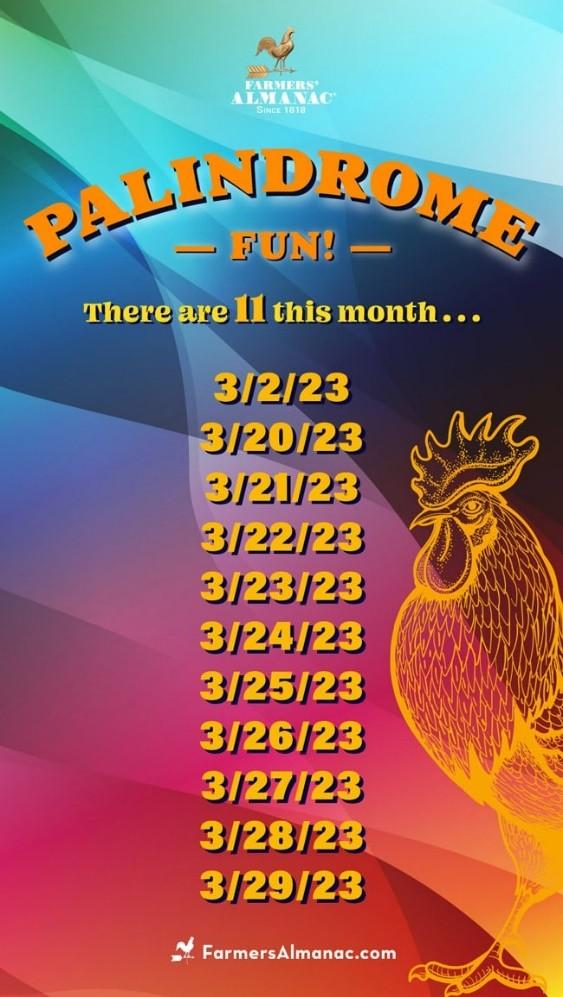
While I have many favorite foraging and herbal gurus, these are two books I’m focusing on at present. I am enrolled in Juliet Blankesnpuor’s Chestnut School of Herbs, learning about so many of the wild herbs that show up in my gardens, commonly referred to as weeds. Her book, The Healing Garden is a superb introduction to herb gardening and everyday herbal use. You can follow chestnut school of herbs on Instagram as well.
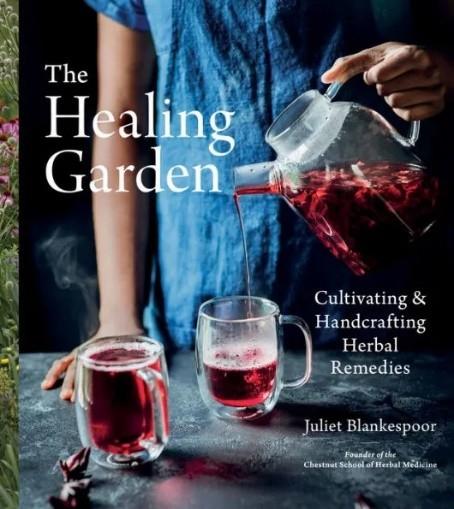
I follow Dina Falconi religiously. I have had her book for the ten years it’s been published. She has delightful content for free and behind a paywall at WildKitchen.com and is on Instagram.
Foraging and Feasting is full of botanical diagrams of the wild foods available to most of us across the U.S. I delight in pulling the book out to help me identify and learn to use the wild edible in my garden.
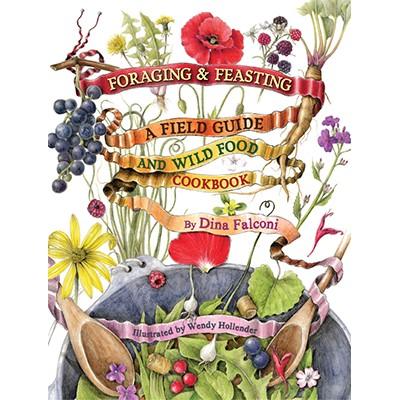
While I got through raising teenagers with wine and potato chips, my mom got through it by running. For her 60th bday we ran a 10k, roughly 6 miles, and for her
70th she wanted to run a 7k. So, prompted by my dad, and hosted by we four daughters, was her Flaming 7’s 70th Birthday 7k. We had an absolute blast, and I think she delighted at being able to run while her 50 year old friends walked due to body ailments, and I am absolutely positive that she felt absolutely validated by running faster than her pack of teenage grandsons.
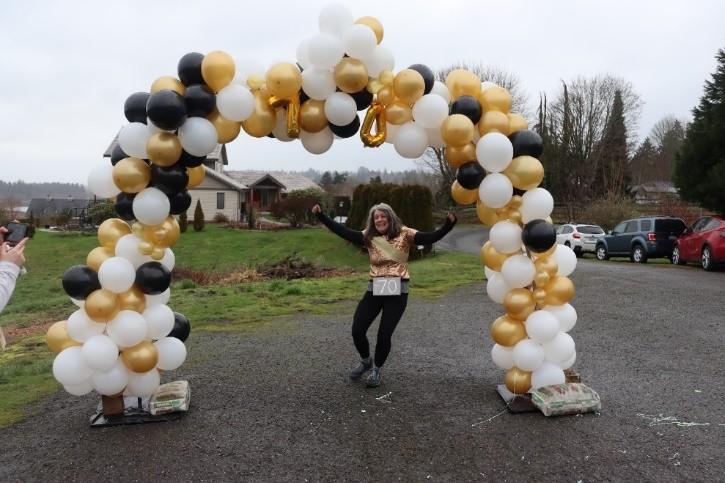
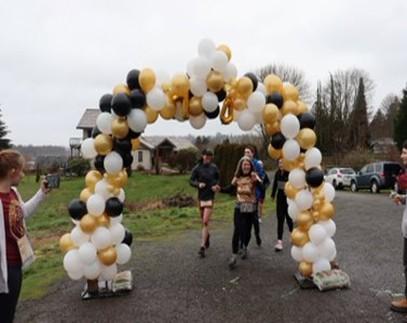
Her ability to stay physically active has been a valuable education for her grandchildren. She kayaks all year round, she walks, hikes, or runs several miles each day. She scales mountain peaks like a billy goat, delighting at how pumped she is at the top. She scurries down hill from elevations that leave me with jelly legs. She is our lifestyle guru for certain.
She is a savvy investor as well, pinning Starbucks as the key to a healthy financial future. Designing and building two homes. She has kept many businesses in La Conner afloat with her talented bookkeeping skills. And from time to time she teaches herself a new computer language, just because. She paid her way back to school when we were young by having an in-home daycare and weekend waitressing. She got a computer programming degree in the early 2000s after my youngest sister entered elementary school. My parents felt that it was important for us to see her graduate.
All of her children are college educated, and so far all of her grandchildren are college educated, military, or college bound. She has come into her own at 70, recognizing her feats, and feeling appropriately proud. Not bad for a gal coming from a generation who had been pretty beat up by sexism and the leftovers of the Vietnam War. Go. Mom.
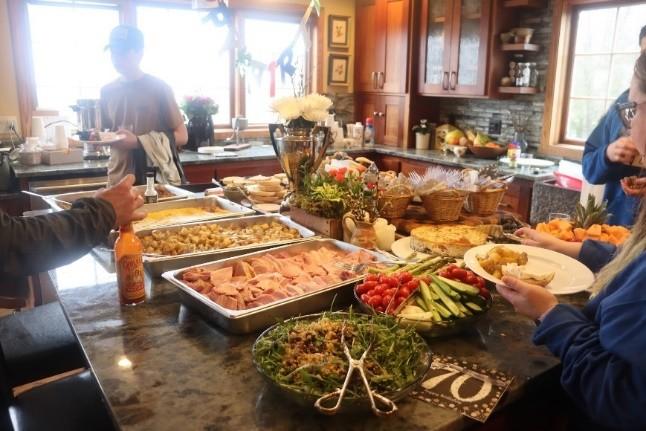
Maple Sugaring
And a monologue on the practice of hyperlocal eating I was a huge fan of Laura Ingalls Wilder in my youth . I even read through the Little House series during Covid to re-acquaint myself with the homesteading ways of the Ingalls family. My favorite scene has always been from Little House in the Big Woods. The scene when they tap the maple trees and make maple candy and maple snow cones and pa fiddles the night away.
When I dreamed up moving to this house, I dreamed of a house with windows in a strange room that connected the kitchen to the backdoor. Through the windows a sea of Maple Trees glowed golden and orange and brown with Autumn leaves. That strange room is my instafamous pantry, and those trees can be seen out the window, above the sink there, on the way out the back door.
When I spied the maple grove here at this house I knew I would be tapping them. And, to my wonder, the family that built this house planted a Sugar Maple right alongside the PNW natives. I bought maple tapping supplies right away so that we could tap the trees that winter.
an even slighter hint of maple, it’s a practice that is indeed revered. You can now find Big Leaf Maple syrup and even PNW Birch Syrup at some more adventurous farm’s markets. In fact, my sister gifted me a bottle she found at a market last summer.
I’m sure it comes as no surprise that the First Nations people here tapped the trees as a spring tonic, partaking in the mineral rich waters that flow from the trees in late autumn and winter. I consulted one of my favorite books, Ethnobotany of Western Washington: The Knowledge and Use of Indigenous Plants by Native Americans, by Erna Gunther, published in 1945, to make certain of that fact. I sipped the waters to aid in the dehydration and rehydration of a colonoscopy. The waters are being touted as an excellent replacement for coconut water and electrolyte drinks.
This year marks only the 3rd time in 7 seasons that we have tapped the trees, but it has definitely been our most successful. I have rendered roughly 13 cups of syrup from the two weeks of tapping.
It is a tedious and messy process, and our stovetop has certainly suffered the consequences. Still, it is an effort that is simply satisfying. It brings my husband and I such joy to partake in the sustenance that wild foods have to offer. Using what nature provides feels as if we are becoming one with the living breathing thing that is Earth. It feels as if we are accepting the offer of Life itself, and we are so grateful for it.
You might be wondering about tapping our Big Leaf Maples, can it possibly be the same as the sweet maple stuff we get from the east coast? Though the syrup is different, earthy, with a slight hint of brown sugar, and
There is a time and place for store bought wonders, for big agriculture, and modern and even global food systems. I love celebrating citrus season and tropical fruits for instance, and our modern food system expediently and most of the time, efficiently, provides calories for a ridiculously large number of people. But, to practice this hyperlocal effort of gleaning as much fuel and medicine from the earth as possible is a practice that we find important. In this effort we are remembering the days of food sovereignty that the first nations enjoyed, we are holding the memories of living with and honoring nature, memories that we hope to pass down to future generations. We are participating in a movement to eat mindfully and slowly, to heal thyself, as we detoxify ourselves from years and years of eating food like things, and very little real food. By partaking in this practice of growing and foraging our own food, on our own property, we get to honor the rhythm of the seasons. become so saturated by sodium and chemicals that you have no choice but to detox from our current foodways, you might want to practice this kind of living, too.
There may come a day when we need this knowledge again, for survival. And for now, it is a pathway out of sickness and into health, away from food waste, and away from chemicals, and away from unhealthy processing systems, and away from wide scale food borne illness outbreaks.
Without further ado, here a few pics of our Maple Sugaring Experience:
I’m not going to waltz about like a slow food prophet, suggesting that everyone should give their life over to living this seasonal rhythm, to tasting and ingesting real food. I’m not going to suggest that you partner in community with others to send some out to make money and keep some home to forage and cook, to keep hearth, but I am going to continue to share the way. For when you do finally get to slow down, and pay closer attention to what you consume, to notice the changing of the seasons, and once you’ve finally
The First Batch rendered a light syrup with a decadent caramel taste:
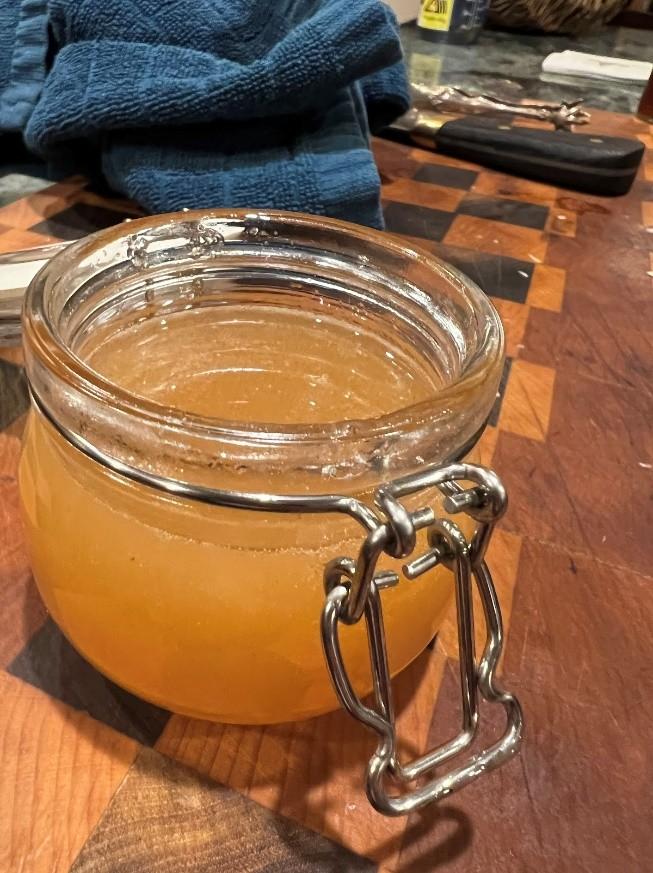
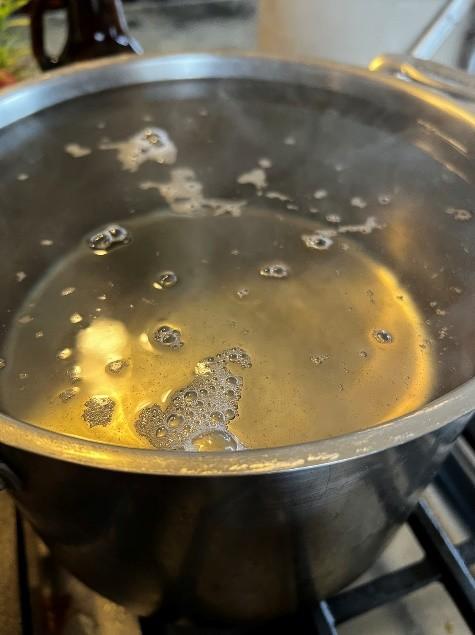
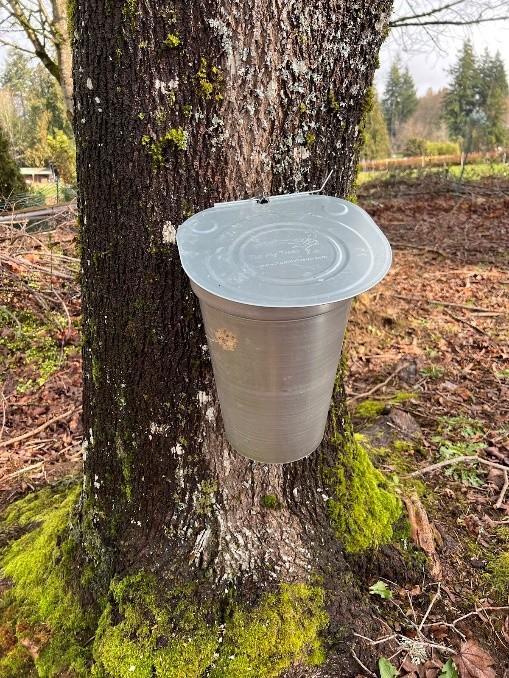
We had 5 trees tapped this year
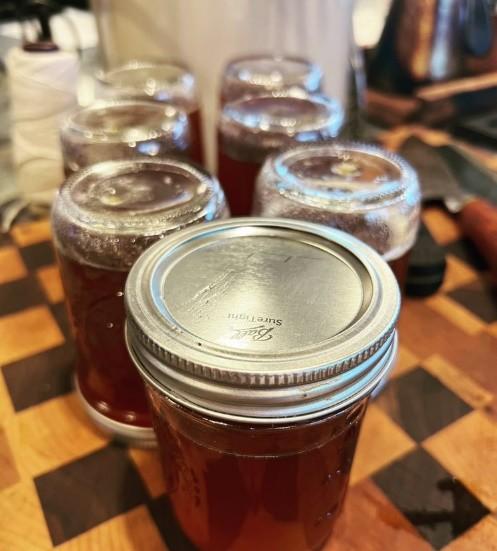
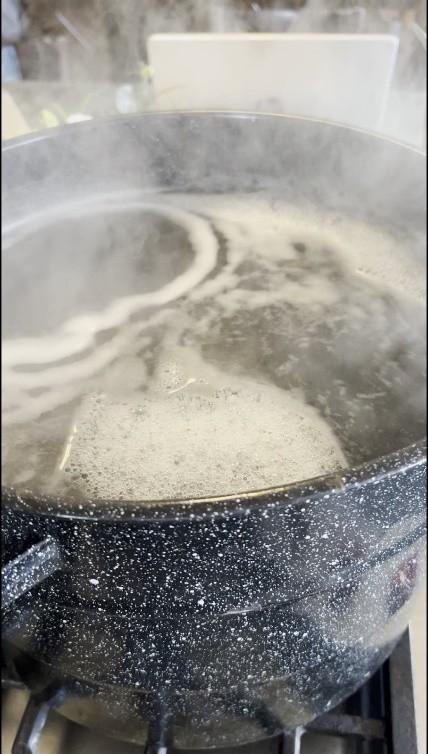
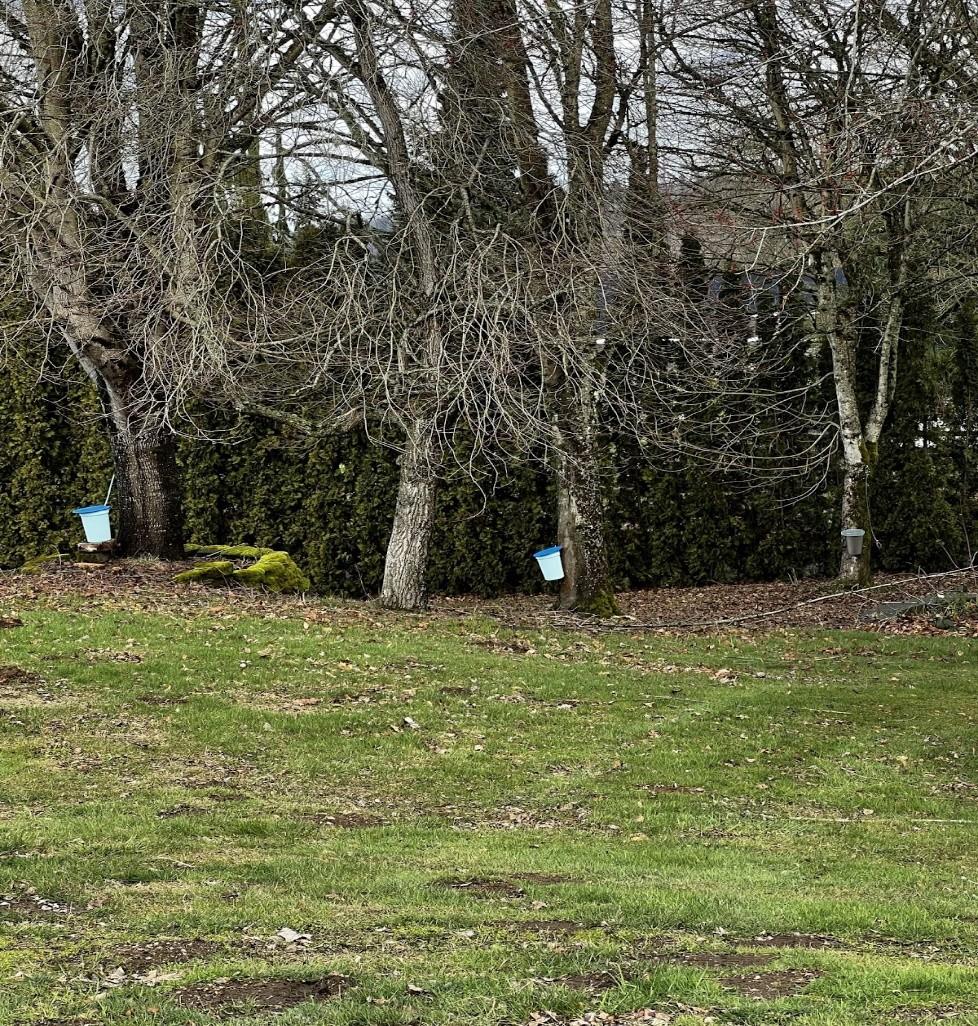
Forgotten sap left to boil to long while we worked on the new greenhouse. This turned into a decadent sandy caramel.
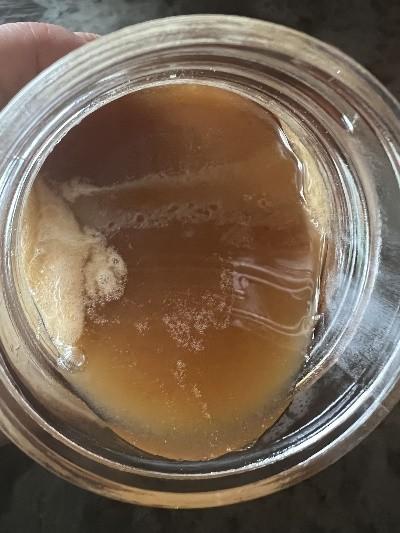
Sap boiled down with pear and pecans. The best experiment.
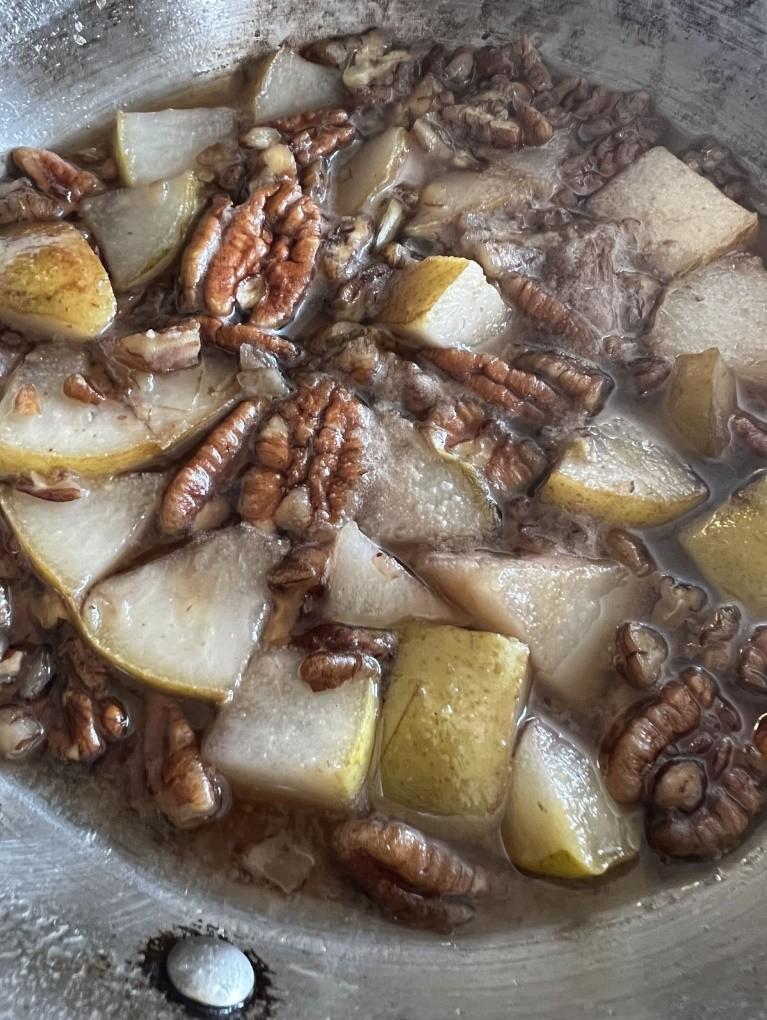
Eaten over Pumpkin Oat Pancakes
